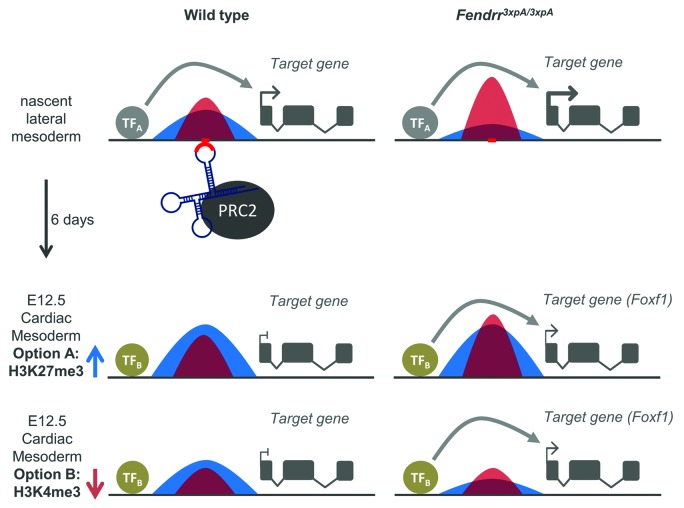Figure 3. Model of immediate and long-term effects of Fendrr acting via PRC2 on epigenetic modification and gene expression. The ratio of repressive H3K27me3 (blue) to active H3K4me3 (red) marks determines the level of gene expression. Histone marks set in the lateral mesoderm are maintained in the descendants of these cells until they are modified by other site-specific regulators resulting, for instance, in an increase in the repressive or a reduction in the active marks within cardiac mesoderm (indicated by arrows). In the case of Foxf1, this leads to a dominating repressive mark and silencing of the gene in wild-type cardiac mesoderm. In Fendrr mutant cells, anchoring of PRC2 to the Foxf1 promoter fails, thus skewing the H3K27me3/H3K4me3 ratio and leading to an increased Foxf1 expression level. The subsequent histone modifications which normally take place in cardiac mesoderm are not able to correct the false prior epigenetic marks set in the lateral mesoderm cells and thus, Foxf1 cannot be silenced.

An official website of the United States government
Here's how you know
Official websites use .gov
A
.gov website belongs to an official
government organization in the United States.
Secure .gov websites use HTTPS
A lock (
) or https:// means you've safely
connected to the .gov website. Share sensitive
information only on official, secure websites.
